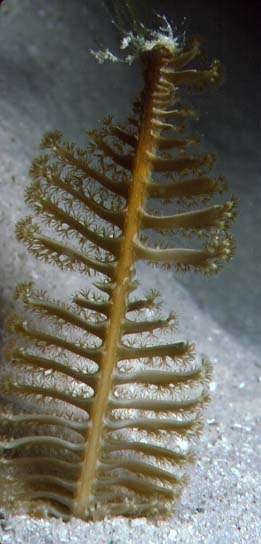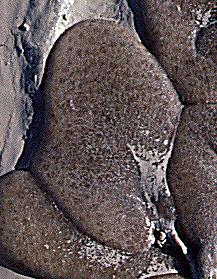
As is the case for all octocorals, sea pens are actually colonies of polyps. What distinguishes sea pens is polyp dimorphism. One polyp grows very large and loses its tentacles, forming the central axis. The base of this primary polyp forms a bulb which may be expanded or contracted; the sea pen uses this bulb (not visible in the picture to the left) to anchor itself. Branching off this primary polyp are various secondary polyps. Some, called autozooids, are typical feeding polyps. Others, the larger and fewer siphonozooids, serve as intakes for water, which circulates within the colony and helps keep it upright. Also supporting the colony are calcareous spicules and frequently a central axial rod of calcium carbonate.
In one group of sea pens, called the Subselliflorae, the secondary polyps are grouped into "polyp leaves," as in the Pacific species of Sarcoptilon shown here. The feather-like appearance of these species gives the sea pens their common name; they look something like old-fashioned quill pens. Most species, however, do not have polyp leaves, and look more like clubs, umbrellas, or pinwheels. The unusual "sea pansy," Renilla (shown below), has a primary polyp that is broad and flattened, with autozooids and siphonozooids on the upper surface. Renilla is actually able to crawl about on its leaflike primary polyp.



